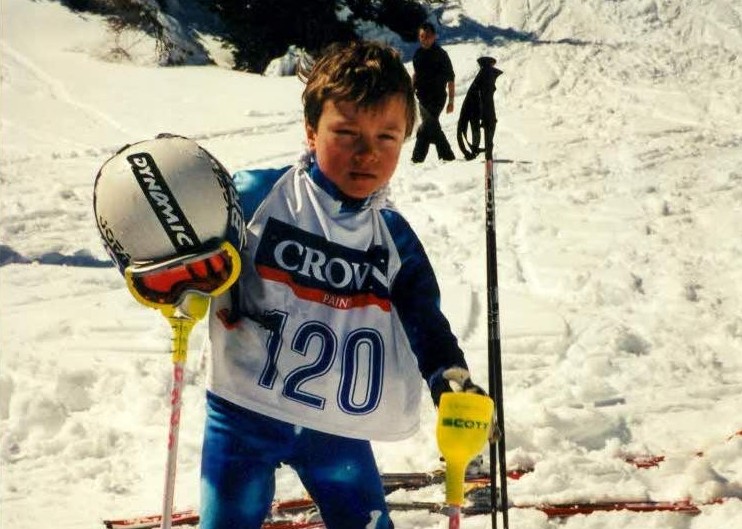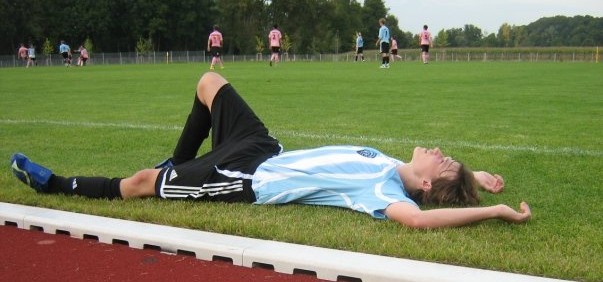One of the very first life lessons I remember learning about myself was that, broadly speaking, I AM NOT ALLOWED TO DO SPORT. Something I still struggle to accept to this day. But I’ll start from the beginning…
Like most children, I was subject to Physical Education at school as well as recreationally during break times. Football was the most common activity, but after-school activities such as; tennis, badminton, squash and skiing took up a lot of my time as my passion for sports grew. Now this wasn’t exactly what my cardiologists had intended for me. By the age of two, I had already had a balloon dilatation (will explain later) and open heart surgery at Great Ormond Street Hospital for Children to combat my functionally bicuspid aortic valve stenosis (also later) and allow more blood to pass through.
Due to the slowly ever-narrowing valve the muscular layer of the left ventricle thickened to help the heart pump blood to all parts of the body. With the narrowing of the valve outlet the pressure gradient between the inside and outside of the valve rises, which can become very dangerous over time. Playing sports at a young age further increased the risk for me as the heart beats stronger and faster putting a lot more strain on the valve and the heart itself.
Despite this, my mother got us (my brother, her and me) into skiing as a sort of family activity we could do together. We all became very good and even started competing in organised tournaments throughout England (on dry-slopes, not snow). In my humble opinion, making sports accessible for all children is vastly beneficial for a child’s upbringing in terms of social skills, physical and mental health as well as, of course, the fun factor. Taking precautions where possible, I recommend a certain degree of sport for all people.
The strive
During a decade without any invasive procedures, I grew up lulling myself into a false sense of security with the dreams of a normal child of becoming a professional footballer, skier and everything in between. School sports was a growing thing at my new school in Munich, Germany and I played at a high standard for the football, basketball, tennis and volleyball teams and raced with the ski team on proper snow! Best of all, I did not feel any different, I was not alone, I was with friends.
Friends would see my scar when changing before and after sports and would learn a bit about me. But I rarely mentioned the important fact, as I never believed I could do so as vehemently as my cardiologist did, that I was practically a super human… He would always tell me that my larger-than-normal heart was working double time, pumping the blood through the smaller valve, just for me to sustain an average level of athleticism, let alone in sports that I excelled in.
I believe I noticed that I was working double time. I strived to be good at the sports I loved and exhausted myself to try and outdo others. Whether this fighting spirit was a subconscious cry to be normal without a heart problem or the poetic result of fighting for my life as an infant I do not know to this day. In hindsight, it was too much. Doctors kept warning me that I should not be doing sports at such a competitive level, ‘but sports are fun!’ I thought. ‘And nothing bad has happened…’
We have a bleederVery little changed in my mentality after my second invasive procedure at the age of 16 as it is very hard to change the way you are without a specific defining moment. As a consequence of this open heart surgery, in which an artificial St Jude valve replaced my aortic valve, I had to take blood thinners to stop blood clotting against said valve. And guess what the doctors told me… and guess what I kept on doing? Sports. On paper, my blood was now four times thinner than the average person’s, meaning that sports, specifically injuries become a life-threatening risk.
However, I had some of my most successful years as an avid athlete, with only minor injuries and bruises that did not change much. This was until I injured my thigh at a basketball tournament driving to the basket. Essentially, I had a dead leg, but with my blood struggling to clot, my leg had doubled in volume by the following morning. Something was definitely wrong. Eight operations and five weeks later I was discharged from hospital heavily sedated with prescription pain-killers a week before my final exams. Shit. (more on this later)
Revelation
This incident really put some things into perspective for me. I didn’t join any team-sport teams at university as I had finally started to learn that first life lesson. However, I associated so much of the good times in life with sports, that I had to join the race ski team. Despite the risk in skiing being astronomical, it is a sport that mainly relies on your own abilities, athleticism and agility. The chance of someone else being at fault for an injury in ski racing is much lower, in my opinion, than team contact sports.
Finally accepting that I will never become a professional athlete (my curling career has not yet started), my love for sports still shines through in my area of study as well as in my jobs. Sports are obviously still important to me and I regularly join in with friends who know all about my condition. I play football for about eight months a year and spend the colder seasons skiing in the Alps on occasional day trips.
UPDATE: I am running the 2016 London Marathon for the British Heart Foundation. If you would like to support me and other adults and children around the world with heart disease, please visit my charity page https://www.justgiving.com/heartlife
Sebastian



You put the rest of us to shame Seb!
You were a pleasure to coach and an amazing person.